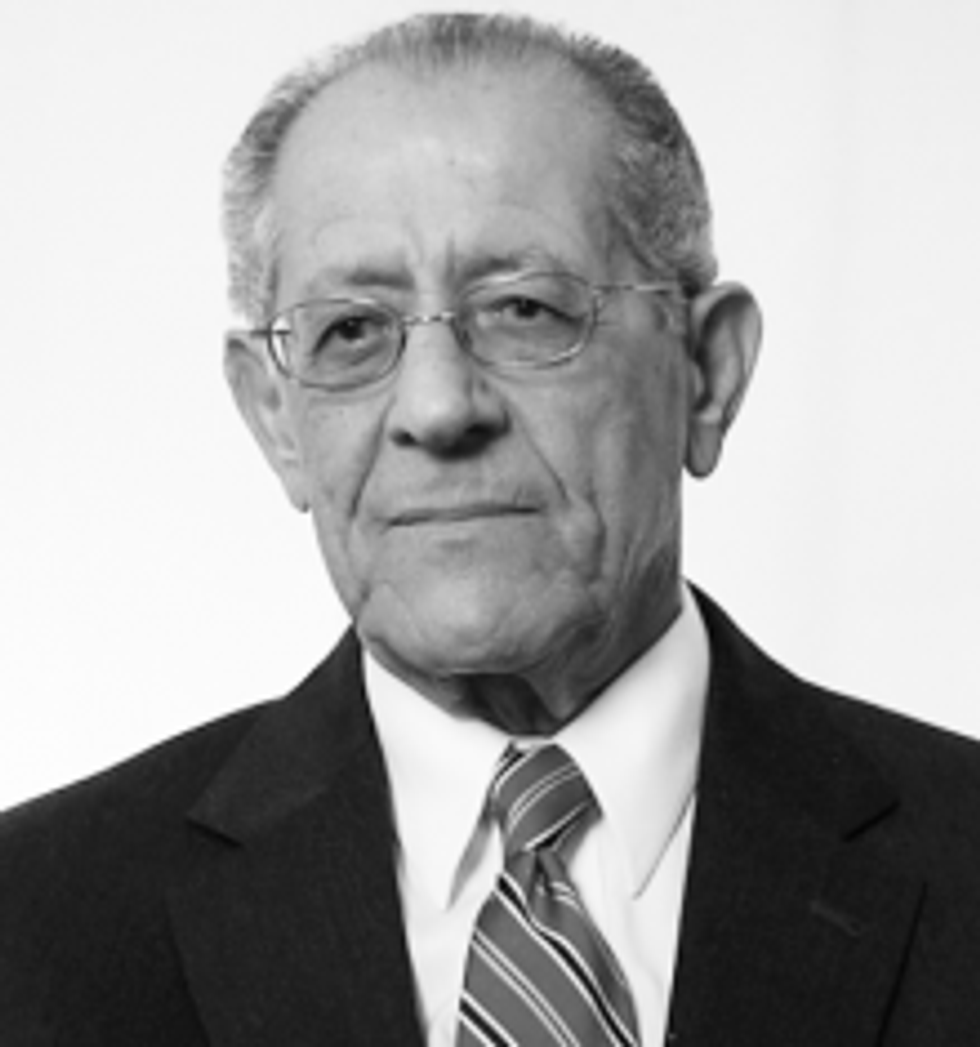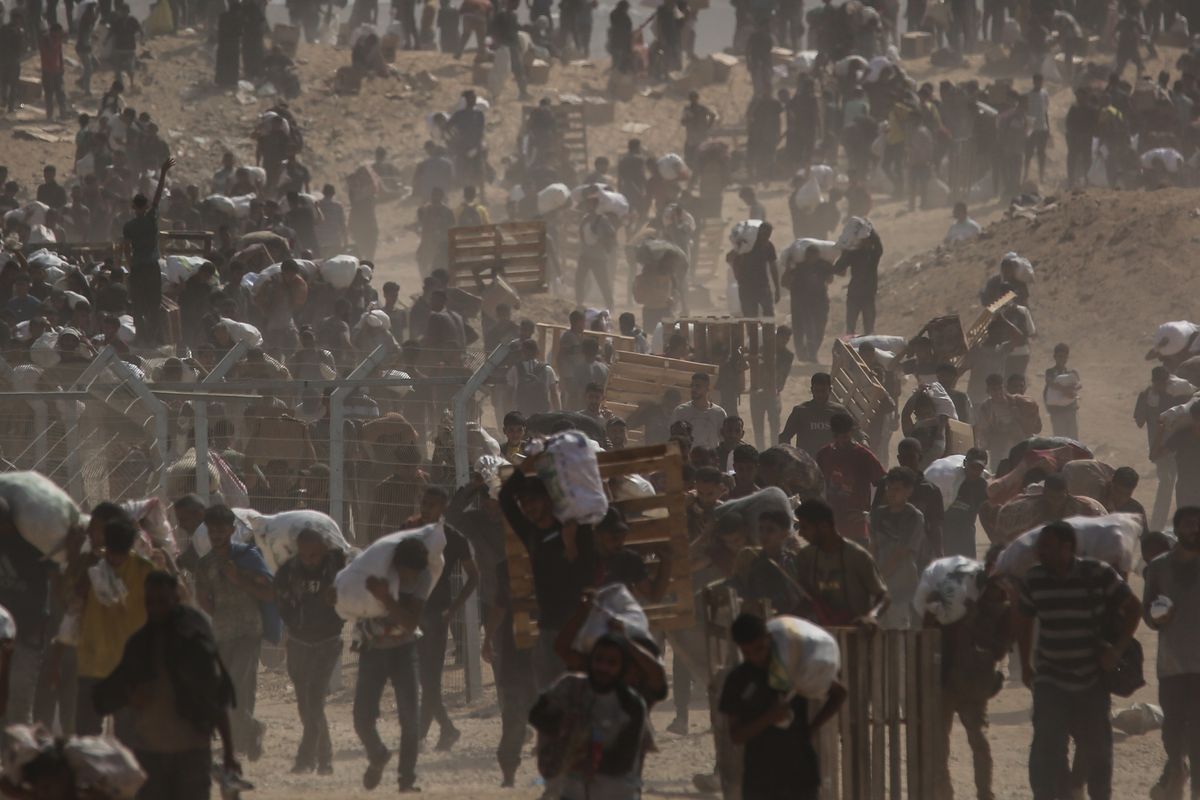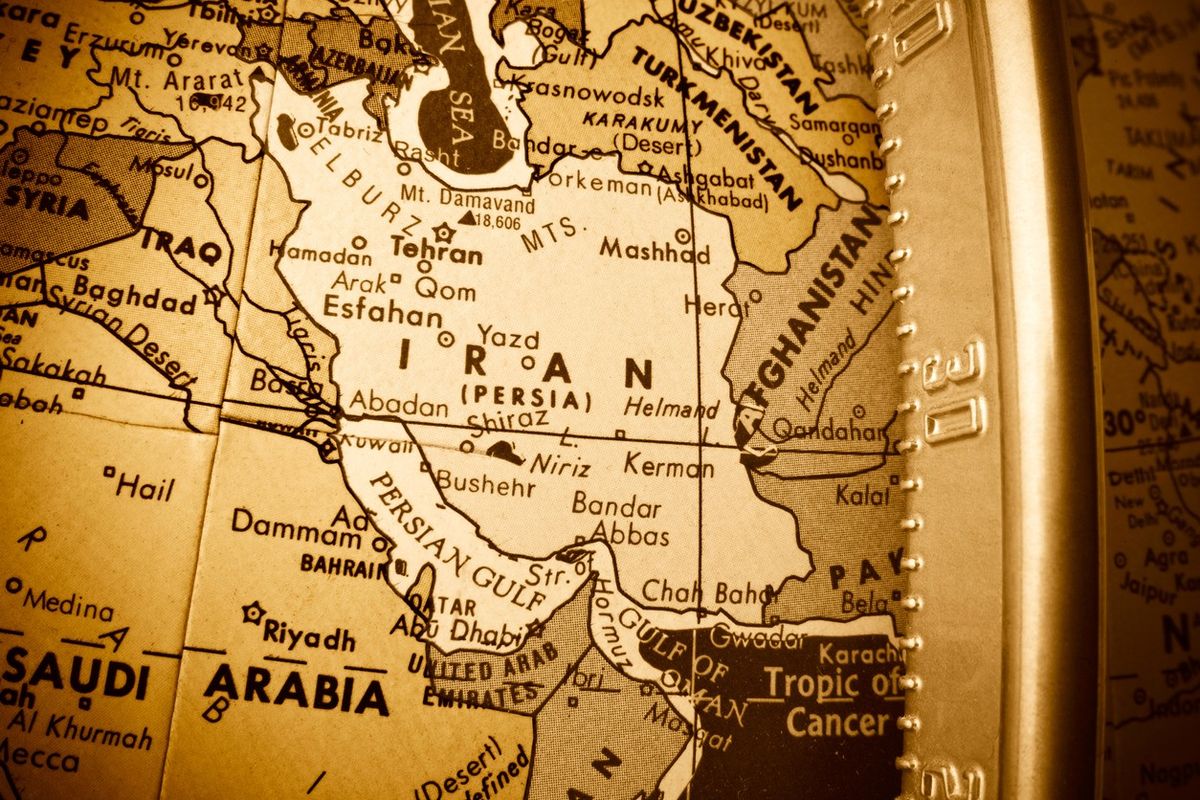In a statement for the record presented to the Senate Select Committee on Intelligence this week about worldwide threats facing the U.S., Director of National Intelligence Dan Coats said that "During the next year, Hezbollah most likely will continue to develop its terrorist capabilities, which the group views as a valuable tool and one it can maintain with plausible deniability," and added that "Hezbollah most likely maintains the capability to execute a range of attack options against U.S. interests worldwide."
The statement included information about 'disrupted' attacks within the United States, as well as attacks, disrupted attacks and military adventurism around the world in places like Lebanon, Cyprus, Israel, Nigeria, Bulgaria, Syria, Kuwait, Yemen, Thailand, Peru and Bolivia.
U.S. officials know that Hezbollah has been operating 'sleeper cells' within the U.S. since 9/11., but experts say the Iranian-backed terror group has primarily focused their efforts inside the U.S. on fundraising activities, sometimes via legitimate businesses.
As part of our special coverage on the terrorist threat this week, The Cipher Brief takes a closer look at Hezbollah and brings you insights into how the organization evolved, how it operates and how Cipher Brief Experts view the threat.
Bottom Line: Hezbollah has evolved from a guerrilla organization, focused on attacking American and Israeli targets in south Lebanon, into a dominant political and military Lebanese force, while concurrently serving as Iran’s strongest and most reliable proxy group. As Hezbollah has enhanced its political clout within Lebanon and reinforced the regime of Syrian President Bashar al-Assad throughout the Syrian civil war, its battle-hardened fighters and immense weapons arsenal continue to threaten U.S. interests and personnel in the Middle East as well as U.S. regional allies Israel and Saudi Arabia.
Background: Hezbollah, meaning “Party of God,” was formed in southern Lebanon after the 1982 Israel-Lebanon war receiving military assistance, training and financial support from the Iranian Revolutionary Guard Corps (IRGC).
- The group initially conducted guerrilla warfare against northern Israel during the Israel-Lebanon war, but soon began launching large-scale terrorist attacks against American targets in Beirut, including the April 1983 U.S. Embassy bombing that killed 63 people and the Marine Barracks attack in October 1983, which left 241 Americans and 58 Frenchmen dead. Both Tehran and Damascus encouraged Hezbollah to carry out such operations as a means of increasing the cost of Israel’s occupation of southern Lebanon, undermining U.S. willingness to remain in Lebanon and preventing the emergence of a Lebanese government willing to sign a peace treaty with Israel.
- Over the years, Hezbollah increased its domestic appeal and has woven itself into Lebanon’s social fabric by providing the southern, predominantly Shiite part of the country with key social services such as schools, clinics, housing and by setting up charities and fundraising networks. These endeavors helped transformed Hezbollah into its current mix of military organization, terrorist group, social welfare agency and political party.
- Hassan Nasrallah became Hezbollah’s leader in February 1992 after the death of his predecessor and mentor Sayyad Abbas Musawi, who was killed by an Israeli helicopter strike. Nasrallah was named as a Specially Designated Terrorist (SDT) in January 1995 pursuant to Executive Order 12947 entitled “Prohibiting Transactions with Terrorists Who Threaten To Disrupt the Middle East Peace Process.” The U.S. State Department designated Hezbollah as a terrorist organization in October 1997, prohibiting U.S. persons from providing material support to the group.
- Hezbollah first emerged as a prominent actor in Lebanese politics in September 1992 after its “Loyalty to the Resistance” bloc won 12 out of 128 seats in the country’s national elections. It has since remained a part of each successive Lebanese government, wielding considerable political influence. In the country’s June 2009 elections, Hezbollah procured 12 seats. Hezbollah picked up an additional seat during the most recent, May 6, 2018 election.
- Hezbollah gained significant notoriety for its July 2006 war with Israel and was subsequently viewed by many in the Middle East as a champion anti-Israel force. In a rally held in Beirut following the conflict, Nasrallah declared a “divine, historic, and strategic victory” over Israel and vowed to never disarm.
- In May 2008, Hezbollah seized much of west Beirut after Lebanon’s government, supported by the West and Saudi Arabia, moved to shut down Hezbollah’s private telecommunications network and remove the Beirut airport’s security chief over ties to the group. The clashes left 81 people dead and brought Lebanon to the brink of a new civil war. The confrontation ended when the government backed down and made a power-sharing agreement with Hezbollah that gave it the power to veto any cabinet decision, a status that they continue to wield.
Steven Ward, Former Senior Iran Analyst, CIA
“Tehran likes to style the alliance between itself, Hezbollah, and the Assad regime in Syria as the core of an ‘Axis of Resistance.’ The name tries to evoke the strength of will to confront, if not overthrow, foreign occupiers and oppressors—that is Israel and the United States—by Iran and its regional partners and proxies. Hezbollah has been the most active and effective anti-Israel and anti-U.S. participant in this Iranian and Syrian-supported resistance since the group’s formation in the early 1980s.”
Issue: In addition to cementing a stronghold in southern Lebanon and exerting significant control over the government in Beirut, Hezbollah has advanced Iran’s regional ambitions by supporting the Assad regime in Syria, establishing territorial contiguity and strategic depth through western Syria. Hezbollah has also procured significant funds and weapons from Iran and maintains the capabilities and arsenal to attack U.S. interests in the region as well as key U.S. allies including Israel and Saudi Arabia.
- In January, 2019, in a speech delivered in Cairo, U.S. Secretary of State Mike Pompeo said that "Hezbollah remains a major presence, but we won't accept this status quo. Our aggressive sanctions campaign against Iran is also directed at the terror group and its leaders, including the son of Hassan Nasrallah, the head of Hezbollah."
- In November, 2018, the U.S. State Department designated Nasrallah's son, Jawad Nasrallah, a terrorist and accused him of carrying out attacks against Israel. The State Department also designated Al Mujahidin Brigades (AMB) a terrorist organization, saying the group maintains ties to Hezbollah.
- “Iran and its strategic partner Lebanese Hezbollah pose a persistent threat to the United States and its partners worldwide. Lebanese Hezbollah has demonstrated its intent to foment regional instability by deploying thousands of fighters to Syria and by providing weapons, tactics, and direction to militant and terrorist groups. Hezbollah probably also emphasizes its capability to attack U.S., Israeli, and Saudi Arabian interests.” – 2018 World Wide Threat Assessment.
- Hezbollah has played a critical role in supporting the Assad regime in Syria and advancing Iran’s regional interests more broadly. Tehran provides Hezbollah with hundreds of millions of dollars annually. However, Hezbollah’s coffers have been strained by paying the salaries of the 6,000 to 8,000 fighters it has stationed in Syria – estimated at $500 to $1,200 monthly per fighter – and caring for the families of the 1,500 fighters killed and 5,000 wounded in that war.
- Since the 2006 war with Israel, Hezbollah has vastly upgraded its military capabilities, suggesting it could inflict significant damage on Israeli cities and civilian infrastructure in any future war. According to the U.S. State Department’s 2016 Country Reports on Terrorism, Israeli officials assess that Hezbollah currently maintains an arsenal of 130,000 rockets of increasing sophistication. The group also deploys a force of approximately 45,000 fighters, about 21,000 of whom are active.
- Hezbollah has sought to develop its cyber capabilities, expanding its potential disruptive and influential reach into the digital sphere. Learning from their Iranian counterparts, Hezbollah’s hackers have attacked Israeli government websites – including their military and foreign ministry sites – with distributed denial of service (DDoS) attacks, seeking to knock them offline during moments of crisis.
- Latin America serves as an important staging ground for Hezbollah’s terrorist and financial operations. The group infamously carried out the July 1994 bombing of the Asociación Mutual Israelita Argentina (AMIA), a major Jewish community center in Buenos Aires. Hezbollah has built intricate financial and logistical support networks in the Tri-border Area (TBA) of Argentina, Brazil and Paraguay where it has generated substantial funds through illicit businesses such as smuggling, money laundering and narcotics trafficking.
Norman T. Roule, Former National Intelligence Manager for Iran, ODNI
“There is no question that Hezbollah is working with Iran and other surrogates to build an infrastructure, which will represent a serious threat to Israel, Jordan and the thousands of Americans and other foreigners who live in those countries. Further, Hezbollah’s cooperation with Iran on Iraq, Yemen and Bahrain will increase the threat to the security of these partners as well as the thousands of Americans who live in those countries. We should not overlook the possibility that Hezbollah is at least maintaining some sort of infrastructure in the United States.”
Robert Richer, Former Middle East Chief, CIA
“Israel has been very vocal about their concerns of the growing strength of Hezbollah in Syria: that Hezbollah troops are becoming blooded, frequent warfighters; are getting better at combined armed efforts in terms of being able to move numbers of people in coordination with support from Syrian air; and using light armor and heavy weapons. They are aware of the Iranian and Hezbollah capability to control drones, with drones flying across the border for collection capabilities and looking at Israeli border defenses.”
Rhea Siers, Former Deputy Associate Director for Policy, NSA
“Hezbollah has become another cyber actor in a crowded region – a potential disrupter and criminal force. Hezbollah has used some rudimentary techniques, like sending SMS messages to Israelis. Planting misinformation, given some of their previous traditional and non-traditional media savvy, shouldn’t be surprising. They have several units involved in psychological warfare and they have a very clear strategy for their propaganda. Further, it is believed that they hijacked several Western IP addresses to project and amplify their message.”
Response: The U.S. government has concentrated on depleting Hezbollah’s finances, sanctioning key Hezbollah operatives and foreign institutions that engage in business with Hezbollah-linked organizations. In addition, the U.S. has provided financial intelligence and training to Mideast allies to help them spot and counter Hezbollah’s malign activity.
- In addition to its designation as a Foreign Terrorist Organization in October 1997, the U.S. Treasury Department has imposed sanctions on Hezbollah pursuant to three Executive Orders: E.O. 12947, issued in January 1995, which targets terrorists who threaten to disrupt the Middle East peace process; E.O. 13224 in October 2001, which authorizes the U.S. government to block the assets of individuals and entities involved in terrorist activities; and E.O. 13582 in August 2012 which targets the Assad regime and its supporters. The U.S. Congress also passed the 2014 and 2015 Hezbollah International Financial Acts, which expanded the scope of Hezbollah-related sanctions to include foreign financial institutions that conduct business with Hezbollah.
- In July 2013, the European Union branded Hezbollah’s armed wing a terrorist organization, but distinguished it from Hezbollah’s political wing. Washington has urged the European Union to designate Hezbollah as a terrorist group and help formulate an international sanctions regime that targets it. Hezbollah’s supporters openly collect funds in countries such as Germany, where Hezbollah’s political branch has yet to be outlawed.
- S. allies in the Middle East have also taken measures to counter Hezbollah. Throughout the Syrian civil war, Israel has conducted several airstrikes against convoys transferring weapons and supplies from Iran through Syria to Hezbollah. Last November, Saudi Arabia’s leadership reportedly tried to force Lebanese Prime Minister Saad Hariri to resign, in hopes of collapsing Lebanon’s coalition government and reducing Hezbollah’s power in the country.
David Cohen, Former Undersecretary for Terrorism and Financial Intelligence, U.S. Department of the Treasury
“In terms of effectiveness, the more precise Treasury can be in identifying why someone is being designated makes a difference. It also matters that Treasury has counterparts around the world who recognize that it takes care in the process, so that sanctions are imposed only on those who are deserving of them. One of the ways we have been successful in having our sanctions respected is by being very deliberate and careful, both in how sanctions are imposed initially, as well as by offering a real opportunity for people to get off the sanctions list if their behavior changes.”
Norman T. Roule, Former National Intelligence Manager for Iran, ODNI
“Sanctions are effective and should continue to include Hezbollah supporters abroad and any financial institution that facilitates the transfer of funds from these supporters. But we need to recognize that the only way to impact Hezbollah’s efforts will be to choke off Iran’s funding. This can only be done by international sanctions on Iran.”
Looking Ahead: Despite the U.S.-led sanctions regime, Hezbollah continues to receive substantial military and financial assistance from Iran, boasts a formidable, well-armed fighting force and remains a dominant player in Lebanese politics. Most worrisome is the potential for another Israel-Hezbollah war, which could further devastate an already turbulent region.
Emile Nakhleh, Former Senior Intelligence Service Officer, CIA
“If Hezbollah continues to have close relations with the Assad regime and with Iran, and if it continues to be supplied by weapons from Iran's Revolutionary Guard, it will remain a credible threat to Israel and to the United States. The threat from Hezbollah will diminish if and when a post-Assad regime is established in Syria and if Iran's fighters and militias depart that country following Assad’s demise.”
Read also How to Kill Off a Withering Terrorist Organization and The Next Terrorist Threat



















